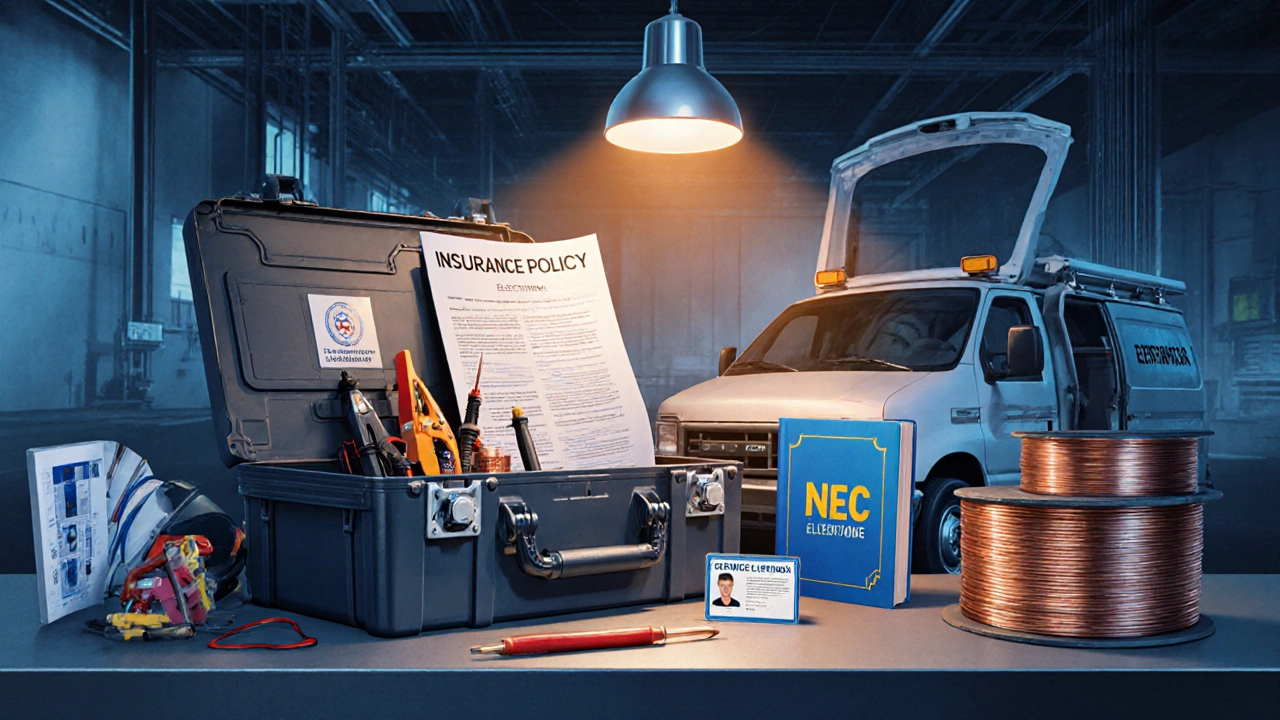Why Are Electricians So Expensive? Understanding High Electrical Service Rates
 Oct, 13 2025
Oct, 13 2025
Electrical Service Cost Estimator
Ever wondered why calling an electrician feels like splurging on a luxury service? You’re not alone. The price tag on electrical work often seems steep, but there’s a logical mix of factors behind those numbers. Below we break down the real cost drivers, show how they differ across regions, and give you tips to keep the bill reasonable without compromising safety.
Electrician rates refer to the total amount charged for labor, materials, permits, and overhead when performing electrical installations or repairs are shaped by a handful of critical elements. Understanding each one helps you see whether a quote is fair or inflated.
Labor Costs: Skill, Training, and Licensing
First and foremost, an electrician’s time is valuable. Becoming a qualified electrician requires a combination of classroom study, on‑job apprenticeship, and passing state licensing exams can take 4-5 years. During that period, apprentices earn modest wages while seasoned pros command premium pay for their expertise.
Licensing isn’t just paperwork-it’s a safeguard. Every state mandates that electricians obtain a license, which involves fees, continuing‑education credits, and background checks. These expenses are factored into the hourly rate to ensure compliance with local electrical codes.
Insurance and Liability Protection
Electrical work carries inherent risks: electrocution, fire hazards, and property damage. To protect homeowners and themselves, electricians purchase liability insurance covering third‑party claims for injuries or damages caused during a job. Premiums vary by coverage limits, but they are a non‑negotiable cost that gets baked into the final bill.

Overhead: Tools, Vehicles, and Office Expenses
Running an electrical business isn’t just about showing up with a screwdriver. Professionals invest in specialized tools-voltage testers, conduit benders, and circuit analyzers-that can cost thousands of dollars. Add a service vehicle, fuel, and maintenance, plus office rent, accounting software, and marketing, and the overhead quickly adds up.
These fixed costs are spread across each job, raising the per‑hour charge. When a contractor says, “my rate includes tools and travel,” that’s a transparent reflection of real expenses.
Material Costs and Code‑Driven Requirements
Unlike many trades, electricians can’t reuse most materials. Wires, outlets, breakers, and panels must meet current electrical code set of standards (e.g., NEC) that dictate safety specifications for installations. Up‑to‑date code compliance often means higher‑grade copper, tamper‑resistant devices, and GFCI protection, all of which increase material costs.
Permits are another hidden cost. Municipalities charge fees to review plans and inspect completed work, ensuring everything aligns with safety regulations. These permit fees are usually passed directly to the homeowner.
Market Demand and Geographic Variations
Where you live dramatically influences the price you pay. High‑density urban areas with a shortage of licensed electricians see rates soar, while rural regions with less competition may offer lower prices. Seasonal demand spikes-like during summer’s peak for AC installations-also push rates upward.
| Region | Low End ($/hr) | Typical ($/hr) | High End ($/hr) |
|---|---|---|---|
| Midwest | 55 | 75 | 95 |
| Southwest | 60 | 80 | 105 |
| West Coast | 80 | 110 | 150 |
| North‑East | 70 | 95 | 130 |
| Rural Areas | 45 | 65 | 85 |

Union Influence and Collective Bargaining
In many cities, electricians belong to unions that negotiate wages, benefits, and work rules. Union contracts often guarantee higher wages and better health coverage, which translate into higher rates for clients. While union work may cost more, it typically assures higher workmanship standards and accountability.
How to Manage Electrical Service Costs
- Get multiple quotes: A side‑by‑side comparison reveals whether a contractor is overcharging on labor or materials.
- Ask for a detailed breakdown: Look for separate line items for labor, materials, permits, and travel.
- Plan for bulk tasks: Combining several small jobs into a single visit can reduce travel and setup fees.
- Consider off‑peak scheduling: Weekday mornings often have lower demand, leading to modest discounts.
- Verify licensing and insurance: A cheap quote from an unlicensed provider can become costly if work fails inspection.
Remember, electrical work isn’t a DIY hobby. Cutting corners can lead to hazards, code violations, and higher long‑term expenses. Investing in a qualified professional protects both your home and wallet.
Frequently Asked Questions
Why do electrician rates vary so much between states?
State licensing requirements, cost‑of‑living differences, union presence, and local demand all influence rates. For example, the West Coast’s higher living expenses and stricter code updates push average rates above $110 per hour, while the Midwest sees typical rates around $75.
Can I negotiate the price of materials separately from labor?
Yes. Ask the electrician for a line‑item quote. Some contractors allow you to source your own materials, but this may affect warranties or compliance with permits.
Is hiring a union electrician always more expensive?
Union electricians typically charge higher rates due to collective bargaining agreements that guarantee wages and benefits. However, they often provide higher-quality work and quicker issue resolution, which can offset the initial cost.
Do permits add a lot to the final bill?
Permit fees vary by municipality but usually range from $50 to $200 per job. They are mandatory for most new installations or major modifications to ensure code compliance.
How can I avoid surprise costs after the work starts?
Insist on a written contract that outlines labor rates, material costs, permit fees, and any potential extra charges (e.g., for unforeseen wiring conditions). Clear communication before work begins reduces the risk of hidden fees.